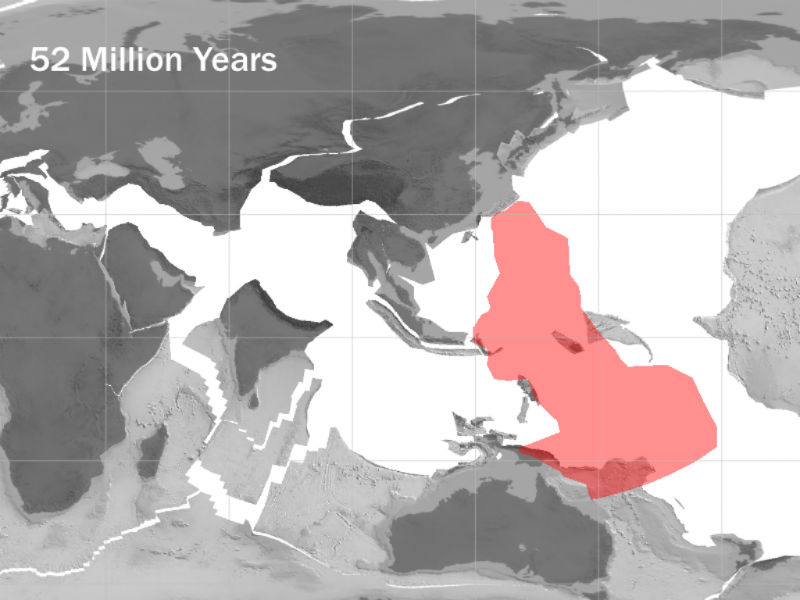Geologists have discovered remnants of a long-lost sea that once ran between today's Pacific and Indo-Australian oceans, spanning more than 15 million square kilometres around 52 million years ago.
This ancient sea, which the team has dubbed the East Asian Sea, was likely 'swallowed up' by the surface of the planet millions of years ago, as the tectonic plates that intersected beneath it gradually sank into Earth's mantle.
The team behind the discovery, led by geologist Jonny Wu from the National Taiwan University, has been studying plate tectonics in the Philippine Sea region for the past five years.
Expecting that they would just have to map one tectonic plate in the area, they soon realised that it harboured a veritable 'slab graveyard', with signs of several plates that have been slowly been sinking into Earth's mantle - the thick, dynamic layer that sits between Earth's crust and its upper core.
While the mantle is mainly made up of silicate rocky material, it behaves more like a viscous fluid than a solid, because its temperatures are so close to the melting point.
The mantle makes up 84 percent of Earth's volume, and it can take up to 300 million years for a tectonic plate to sink all the way through it and disappear into Earth's core below. Think of the plates' movements like giant leaves slowly sinking to the bottom of a swimming pool.
Using a technique called seismic tomography, which interprets seismic waves generated by earthquakes and allows you to turn them into three-dimensional reconstructions, Wu and his team retraced the movements of 28 huge slabs of Earth's crust, which had sunk between 500 and 1300 kilometres deep into the mantle.
"Each of these plates starts to become part of a really intricate jigsaw puzzle with different sizes and shapes and times they must have existed on Earth," Wu told Erin Blakemore at The Washington Post.
Once that jigsaw puzzle was complete, they found at least 70 million square kilometres' worth of these sunken slabs - equivalent to about one-seventh of the total Earth surface area.
Reconstructing the history of these plates allowed the team to see how 15 million square kilometres of this buried material would have served as the bottom of the ancient, now-defunct East Asian Sea some 52 million years ago - less than 10 million years after the demise of the non-avian dinosaurs.
"We were seeing things that we didn't even realise existed," Wu told Blakemore. "We didn't know whether to believe it or not until we put it all together."
 Plate tectonic reconstruction showing the East Asian Sea 52 million years ago. Credit: Jonny Wu
Plate tectonic reconstruction showing the East Asian Sea 52 million years ago. Credit: Jonny Wu
The researchers suspect that the East Asian Sea gradually started shrinking into nothing once the Philippine Sea Plate grew and migrated northwest, colliding with the East Asian Sea Plate, and directing it down into Earth's mantle.
At the same time, the Indo-Australian, Pacific, and Caroline plates pushed down on the southern portion of the East Asian Sea plate.
"The southern area of the East Asian Sea Plate was eventually subducted by, or forced beneath, other neighbouring plates," Greg Uyeno explains for Live Science.
By about 10 million years ago, the entire sea was gone.
The team has since partnered with researchers from the University of Houston, and they're going to use the same technique to map the movements of ancient plates all over Earth's crust and below. As Wu told The Washington Post, it's like retracing Earth's history from the inside-out.
"We're filling in the other half of plate tectonics by looking inside the interior of the Earth," he says. "Who knows how many other oceans there are to be found?"
The research has been published in the Journal of Geophysical Research.
